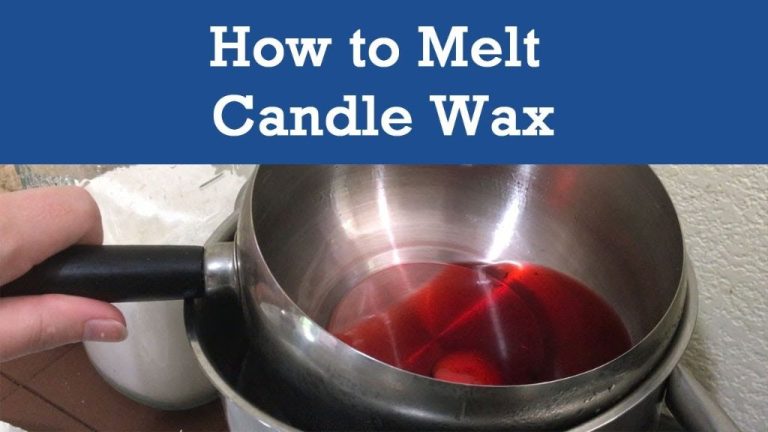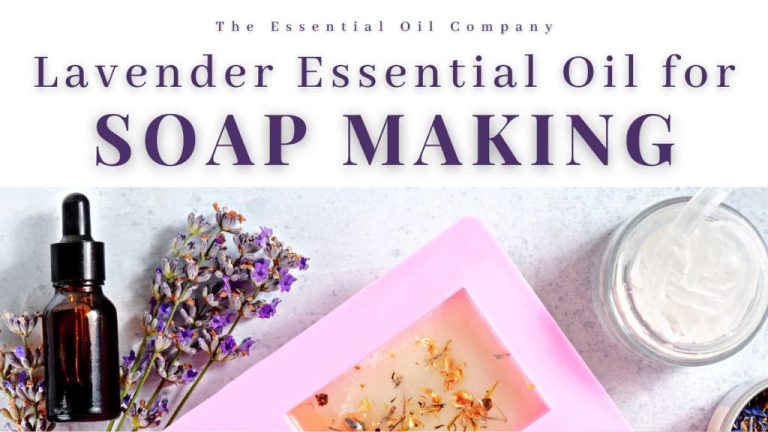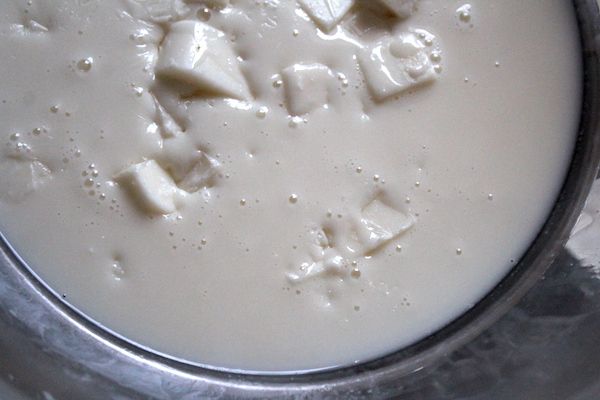Can You Add Too Much Fragrance Oil To Candles?
What is Fragrance Oil
Fragrance oil, also known as aromatic oil, is a blended synthetic aroma compound that is used to provide fragrance to candles, room sprays, perfumes, and other products. Unlike essential oils that come directly from plants, fragrance oils are artificially created in a laboratory by combining aromachemicals and natural compounds like plant extracts or essential oils 1.
The main purpose of fragrance oil in candle making is to provide pleasing scents when the candle is burned. The aroma given off by the fragrance oil is an important part of the candle-making process and helps create the overall sensory experience. Popular fragrance oil scents for candles include floral, fruity, vanilla, woodsy, and seasonal aromas like pumpkin spice or pine.
There are two main types of fragrance oils used in candle making:
- Synthetic fragrance oils – Created from synthetic aroma chemicals to mimic natural scents.
- Nature identical oils – Contain some natural extracts but are blended with synthetics.
Both provide vibrant scents, but synthetic fragrance oils tend to be more affordable while natural identical oils promote a more authentic aroma.
Recommended Usage
When making candles, it’s important not to use too much fragrance oil. Most candle making suppliers recommend using 5-10% fragrance oil by weight of the wax. For example, if you are making a 6 oz candle with 5 oz of wax, you would use 0.25 – 0.5 oz of fragrance oil (5 x 0.05 = 0.25 oz) (5 x 0.1 = 0.5 oz).
However, some waxes like soy wax have lower recommended usage rates of 6-8% due to absorption issues. It’s best to follow the usage recommendations from reputable candle making suppliers like Lone Star or CandleScience who have extensive testing on ideal usage rates. Lone Star recommends a maximum of 1 oz of fragrance per pound of wax, no matter the wax type [1]. Meanwhile, CandleScience has an online fragrance calculator tool to determine exact recommended amounts based on your candle specifications [2].
Signs of Too Much Oil
There are several signs that indicate your candle contains too much fragrance oil:
- The scent does not throw or fill the room as expected – too much oil can overwhelm the wax and prevent fragrance from being released properly when burned (according to https://lonestarcandlesupply.com/dos-and-donts-of-candle-making/).
- Wet spots or oil sweating on the sides and bottom of the candle – excess oil seeps out of the wax and pools visibly (according to https://www.ecocandleproject.com/blogs/our-blog-posts/wax-don-t-bind-with-fragrance-so-what-really-happens-in-the-candles).
- Poor burn quality with excessive smoke or an uneven flame – too much fragrance can clog the wick and disrupt normal burning.
Consequences of Using Too Much Fragrance Oil
Using an excessive amount of fragrance oil in candles can lead to several issues that negatively impact performance and safety.

One common problem is tunneling, where the candle burns unevenly and forms a hole or tunnel in the center. This happens because too much oil clogs the wick, preventing it from burning properly. As the wax around the edges melts, the wick becomes snuffed out by the excess oil pool in the middle.
Another consequence is poor scent throw. Counterintuitively, overloading a candle with fragrance oil can result in a weak scent when burning. The abundance of oil overwhelms the wax and prevents proper scent diffusion as the candle burns.
Too much fragrance oil can also cause smoking and sooting, leaving black residue on the glass and releasing an excessive amount of smoke. The extra oil prevents complete combustion and causes the wick to drown.
Overall, overfragrancing candles diminishes performance, aroma, and safety. Following usage recommendations helps prevent tunneling, smoking, sooting, and other issues.
Fixing Overfragranced Candles
If you’ve added too much fragrance oil to your candles, there are a few ways to try and repair them:
First, you can remelt the overfragranced wax and add more unscented wax to dilute the fragrance. Be sure to use the double boiler method and avoid overheating the wax. For every 1 lb of overfragranced wax, add approximately 2 lbs of unscented wax.1 The additional wax will help absorb and disperse the excess fragrance oil.
Second, you can try placing the overfragranced candles in a well-ventilated area for 1-2 weeks to allow some of the fragrance to dissipate over time. Turning the candles upside down can also help the fragrance dissipate from the wick and top layer.
Finally, you may need to simply rebatch the wax by melting it down completely, pouring it into a mold, and allowing it to cure again. This will distribute the fragrance oil more evenly throughout the candle for a less overwhelming scent. Be prepared to lose some of the original scent in the process.
The key is to avoid adding too much fragrance in the first place by carefully measuring and testing wax-fragrance ratios. But with some patience and extra wax, overfragranced candles can usually be revived.
Best Practices
When adding fragrance oil to candles, it’s important to follow best practices to achieve optimal results and avoid issues like overfragrancing. Here are some tips:
Accurately measure the fragrance oil using a small scale or graduated cylinder to ensure you add the right amount. The recommended usage rate is typically 6-8% of wax weight, but check the specification for each fragrance oil (https://lonestarcandlesupply.com/scent-guide/). Adding too much can lead to issues like scent throw that’s too strong, sweating, tunneling, and fading color.
Test fragrance oil blends in small batches first before making large candles. This allows you to perfect the scent and make adjustments (https://www.candlescience.com/learning/fragrance-oil-blending-101/). Take notes on the blends that work well.
Use high quality wicks that are properly sized for the candle diameter and wax type. Quality wicks will burn evenly and prevent issues like tunneling that can result from poor fragrance dispersion.
Choosing Fragrances
When choosing fragrances for candles, it’s important to select compatible scents that will blend well together. Simple, single-note fragrances like lemon or lavender are easiest to work with. Complex fragrances with multiple notes can sometimes result in dissonant or unpleasant smells when combined.
The two main types of fragrance oils for candles are natural and synthetic. Natural oils are extracted from plants and can be more subtle. Synthetic oils are chemically formulated and tend to be stronger. A blend of natural and synthetic oils is common for achieving the desired aroma.
Testing different fragrance combinations in small batches first is recommended to find pleasing, balanced scents. Refer to a fragrance oil blending chart for guidance on mixing percentages. But trust your nose, as personal preference is key in crafting signature candle scents.
Storing Fragrance Oils
Proper storage is crucial for preserving the quality and shelf life of fragrance oils. Ideal storage conditions include keeping oils in a cool, dark place at a stable temperature between 50-80°F. Exposure to light, heat, and oxygen can cause fragrance oils to deteriorate faster. According to The Flaming Candle, the refrigerator is the optimal storage location, as it maintains cool and dark conditions. The Flaming Candle also recommends immediately re-capping bottles after use to minimize air exposure.
When stored properly, most fragrance oils can last 1-2 years before losing their potency. However, citrus and fresh fragrances have shorter shelf lives of 6-12 months. From Nature With Love notes that refrigeration can extend all fragrance oils’ shelf life, with proper storage allowing most fragrances to last 2-4 years. Regardless of storage method, it’s wise to date bottles upon opening and discard any oils past their prime that smell off or weakened.
Sources:
https://www.theflamingcandle.com/how-should-i-store-fragrance-oil/
https://www.fromnaturewithlove.com/library/storagefragranceoils.asp
Safety Considerations
When working with fragrance oils, there are some key safety considerations to keep in mind:
Proper ventilation is crucial when making candles with fragrance oils. The National Candle Association recommends working in a well-ventilated area to allow fragrance oil vapors to dissipate. Open windows, use fans, or consider working outdoors if possible. Avoid breathing in concentrated fragrance oil fumes for extended periods.
Some people may experience skin irritation or allergic reactions from certain fragrance oils, especially with prolonged, direct skin contact. Wear gloves when handling oils, and wash hands afterward. Do test patches when using a new fragrance oil recipe.
According to the National Candle Association, fragrance oils specifically designed for candle making are formulated to be safe when used as directed. Avoid using fragrance oils meant for other purposes in candles. Always follow usage instructions for fragrance oils and candle wax to avoid potential safety hazards.
In general, take care to avoid spills, practice good hygiene, store oils properly, and supervise children and pets around candle making supplies. With reasonable precautions, making scented candles with fragrance oils can be an enjoyable hobby.
Future of Fragranced Candles
The fragrance industry is always evolving with new scent trends and innovations in candle making. Some key trends shaping the future of fragranced candles include:
Trends in scents are leaning towards warm, sweet flavors like brown sugar according to Bath & Body Works’ fragrance expert Noelle Marois (source). CandleScience’s 2023 fragrance forecast also predicts lighter, fruitier summertime scents growing in popularity like watermelon, grapefruit, and coconut (source).
Sustainability efforts are driving demand for natural soy, coconut, and beeswax candle options made with essential oils instead of synthetic fragrance oils. Consumers want eco-friendly products with transparent sourcing.
Personalization and customization are increasing as customers want signature scents that reflect their unique tastes and personalities. Brands able to offer tailored, customizable candle options can better meet this demand.
While scent trends come and go, the therapeutic benefits of candles remain timeless. Thoughtful fragrances that evoke specific moods and emotions will continue providing consumers relaxation, joy, and nostalgia for years to come.






